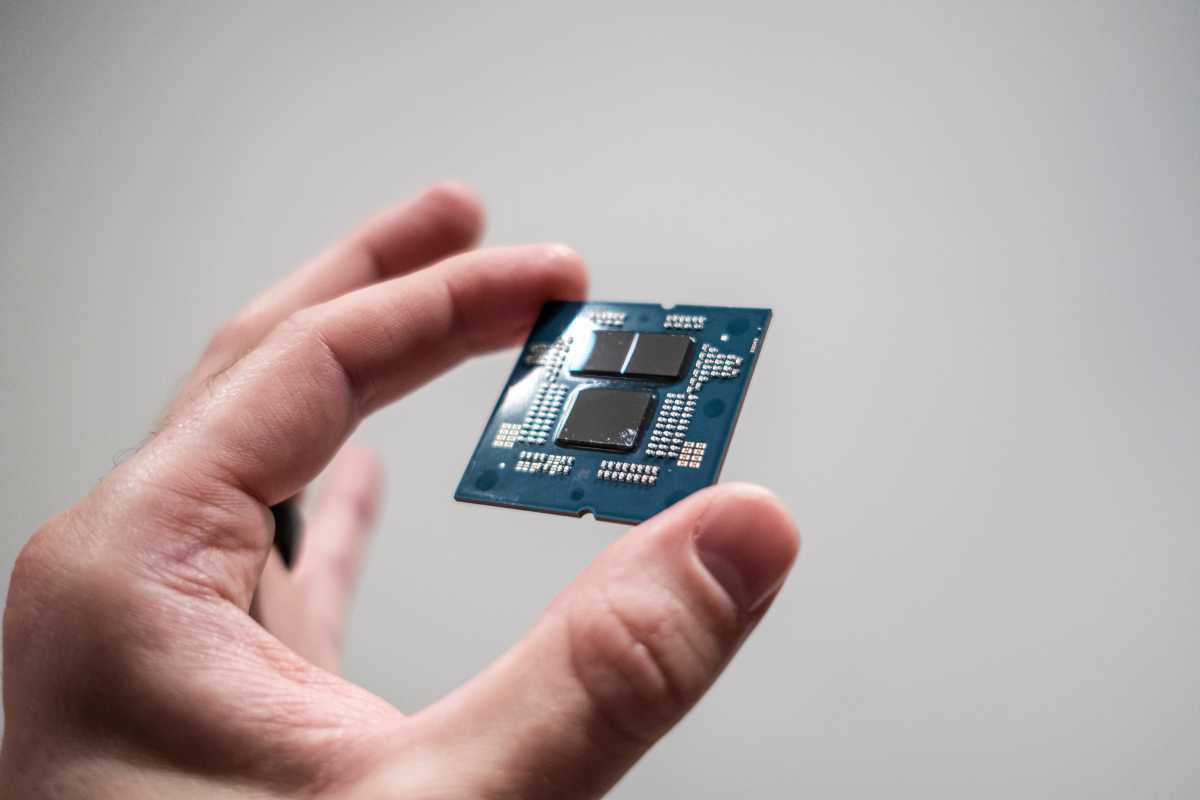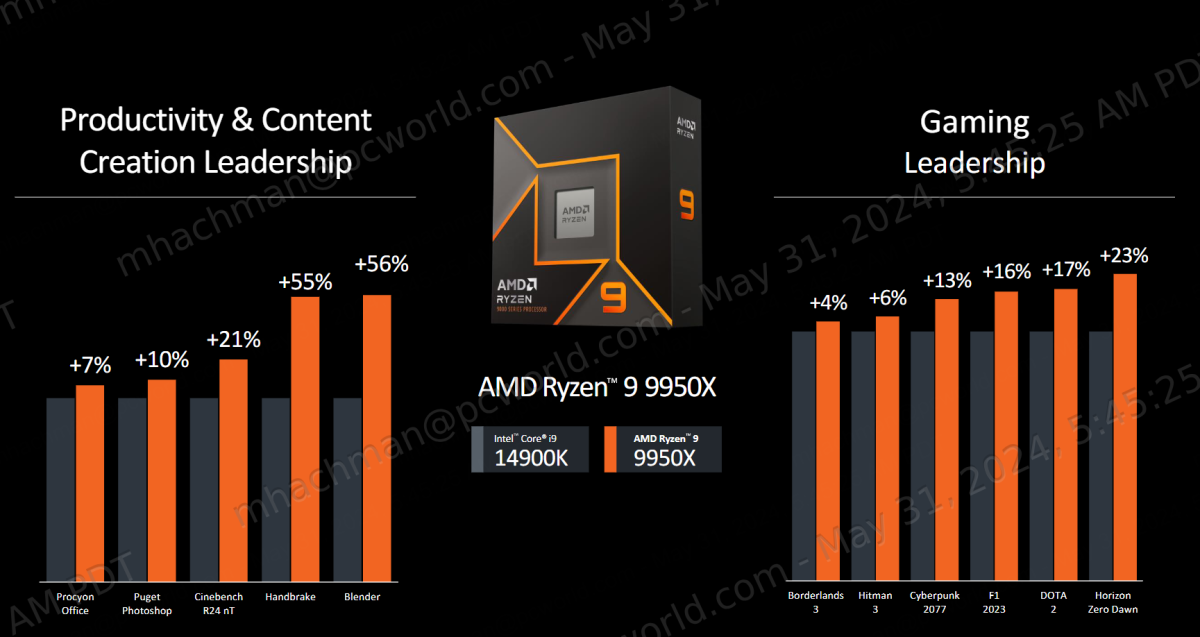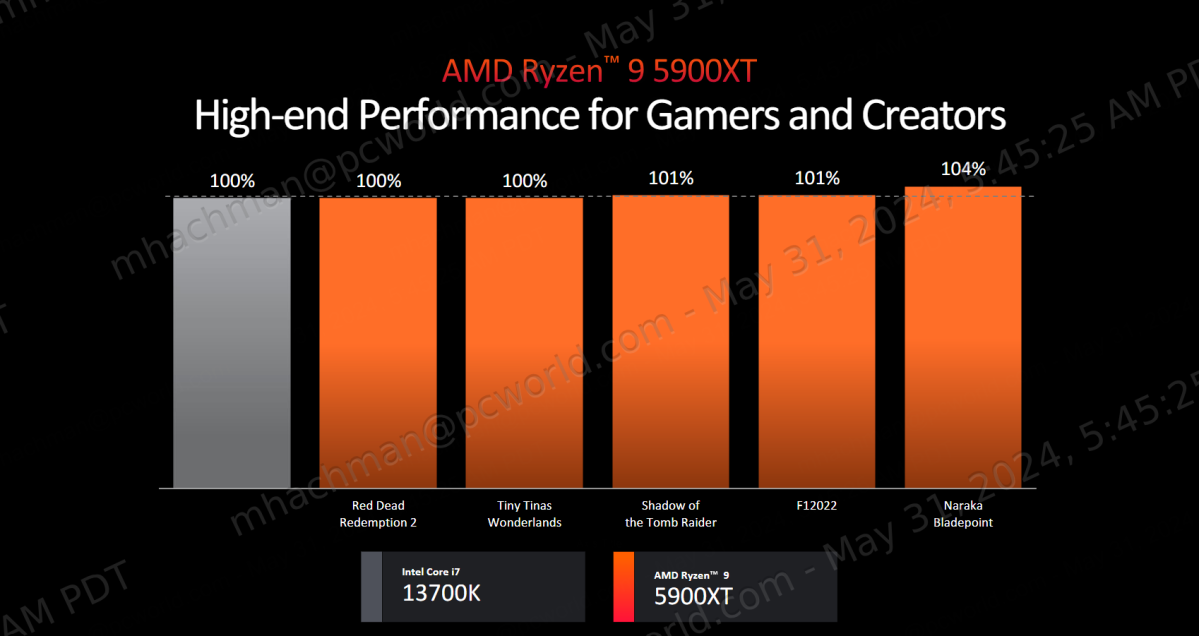AMD’s Zen 5 is here! AMD launched its next-generation Ryzen 9000 series of desktop PC processors on Monday morning local time at Computex, kicking off the next round of processor competition between AMD, Intel, and (now) Qualcomm.
If you recall our Ryzen 7950X review, you’ll remember that that chip was accompanied by three others. That’s still the case: AMD launched the flagship Ryzen 9 9950X, plus the Ryzen 9 9900X, the Ryzen 7 9700X, and the Ryzen 5 9600X as well. This is AMD’s “Granite Ridge” architecture, supported by new X870 motherboards.
There’s a treat for existing customers, too: AMD is formally extending the lifespan of its AM5 socket through 2027, up from the previously pledged 2025, and is adding the Ryzen 9 5900XT and Ryzen 7 5800XT too on the AM5 platform. (AMD continues to show the older AM4 platform existing through 2024, too.)
Recall Intel’s new strategy: chasing Qualcomm into the low-power, all-day computing space while trying to maintain performance. AMD has leaned harder into outperforming its competitors, and is capitalizing on that. But there is no AI in these parts, unlike the AMD Ryzen 8000G series of APUs.
Mark Hachman / IDG
“This is the world’s most powerful consumer desktop processor,” said Donny Woligroski, senior technical marketing manager of consumer processors at AMD.
AMD Ryzen 9000: Speeds and feeds
From a product standpoint, the Ryzen 9 9950X looks very familiar: with 16 cores, 32 threads, and a 170W TDP, the 9950X looks the same on paper as the 7950X. (The Ryzen 8000 desktop APUs launched last fall are much more modest.) The difference? A significant IPC (instructions per clock) improvement. AMD is citing a 16 percent IPC improvement gen-over-gen on top apps and games, when comparing the Ryzen 7 9700X and Ryzen 7 7700X.

Mark Hachman / IDG
The lower-end Ryzen 9000 chips benefit from the same performance boost, too. But there are even more hidden benefits there, albeit more understated.
Both the Ryzen 7 9700X and the Ryzen 5 9600X maintain the same core and thread count as their predecessors. But clock speeds have been nudged up a bit, and there’s a been significant drop in power: the older Ryzen 7 7700X and Ryzen 5 7600X were 105W parts. The new Ryzen 7 9700X and Ryzen 5 9600X consume just 65W, which will save some money on utility bills. They’re about on par with the slower turbo power settings of Intel’s H-series Meteor Lake parts, too, at 64W. (Qualcomm hasn’t cited TDP numbers for the Snapdragon X Elite.)
The lower power is a result of a combination of the chip’s process technology, firmware, and power optimizations an AMD spokesman said via email. The Ryzen 9000 chiplets are built on an optimized high-performance TSMC 4nm process node alongside a 6nm I/O die with integrated AMD RDNA 2 graphics and DDR5 memory and PCIe 5.0 controllers, he added.

Ryzen 9000 under the hood.
Adam Patrick Murray / Foundry
All of the new Ryzen 9000s hide a small integrated GPU with 2 CUs similar to the Ryzen 7000 series, an AMD spokesman said.
None of the new Ryzen 9000 processors are here yet; they’ll arrive in July. Unfortunately, we don’t know the answer to a key question: how much does Ryzen 9000 cost? We also don’t know the base clock speed of these new chips, either, nor specifically which process technology they’re being fabricated upon.
AMD didn’t address why it skipped the Ryzen 8000 naming scheme for its new desktop parts, but I assume it was to avoid confusion with the Ryzen 8000 laptop family, the same rationale it used in launching the Ryzen 5000 desktop processors.
AMD Ryzen 9000: how fast is it?
Zen 5 delivers improved branch prediction accuracy and latency, higher throughput, and more parallelism. Specifically, the performance uplift AMD cited includes up to a doubling in the front-end instruction bandwidth, the data bandwidth between caches, and the AI performance in both AI and AVX512 throughput. All of these contribute to the Ryzen 9000’s performance.
These desktop processors do not contain dedicated NPUs, though the Ryzen 8000 series did. (AMD is also launching new mobile processors, the Ryzen AI 300 series, with a more advanced NPU.)

Mark Hachman / IDG
AMD hasn’t said how many PCIe lanes hang off the processor and chipset, but it is also saying you’ll get double the PCIe 5 bandwidth of an Intel Core i9-14900K. (“Intel’s Meteor Lake has sixteen PCIe 5 lanes to divide,” an AMD spokesman said via email. “If you run a CPU+GPU that usually drops to 8x/4x. On our CPU we have 20 lanes. You can run full 16x/4x.)”)
Separately, AMD is implying that the older 5900XT meets or exceeds the frame rates you’d get while gaming on an Intel Core i7-13700K, and the 5800XT will do the same for a PC powered by an Intel Core 13600KF — at least in some games.

Mark Hachman / IDG
Naturally, we’ll have to wait until July to test AMD’s claims for ourselves. And from there, it’s probably on to Intel’s next desktop chip, Arrow Lake, in the fall.
New X870 motherboards, new Ryzen 5000, and the importance of long-lived sockets
The spectacular launch of the Ryzen 5000 seems long ago in 2020, but AMD is celebrating the continuation of the AM4 socket and Zen 3 architecture with the launch of the Ryzen 9 5900XT as well as the Ryzen 7 5800XT. Do these chips seem familiar? They should. But they’ve also been tuned for additional performance and core count.
AMD launched the 5900X in 2020 as a 12-core/24-thread chip with a 3.8GHz base clock and a 4.8GHz turbo clock. The 5800X is an 8-core, 16-thread chip with 3.8GHz base clock and a 4.7GHz turbo clock.
The 5900XT and the 5800XT (the “T” denotes a bit more performance, Woligroski said) add cores: 16 cores/32 threads for the 5900XT, at up to 4.8GHz speeds; the 5800XT is a 8-core, 16-thread part, also with a 4.8GHz turbo clock. And for these, AMD has released pricing: $359 for the 5900XT and $249 for the 5800XT.
“It should be comforting for someone who wants to invest in something new, that they don’t have to invest in a new platform in the near future,” Woligroski said.

Adam Patrick Murray / Foundry
AMD’s commitment to socket consistency means that you’ll have an easy time understanding how AMD’s two new supporting chipsets, the AMD X870 and AMD X870E, fit in. Both are designed for the AM5 socket, which means that they’ll work with older Ryzen 7000 processors, for example. Likewise, you can insert the new Ryzen 9000 processors into older 600-series boards, Woligroski said.
The new chipsets include three key features: USB4 is now standard on motherboards designed for both chipsets; PCIe Gen 5 is also standard for both graphics and NVMe SSDs, too — even though PCIe 5 SSDs are rolling out with some caveats and PCIe5 GPUs have yet to materialize. Finally, AMD has added support for faster memory speeds for its EXPO technology, which is billed as AMD’s easy yet aggressive way to allow memory overclocking on AM5 systems for higher framerates in games.



